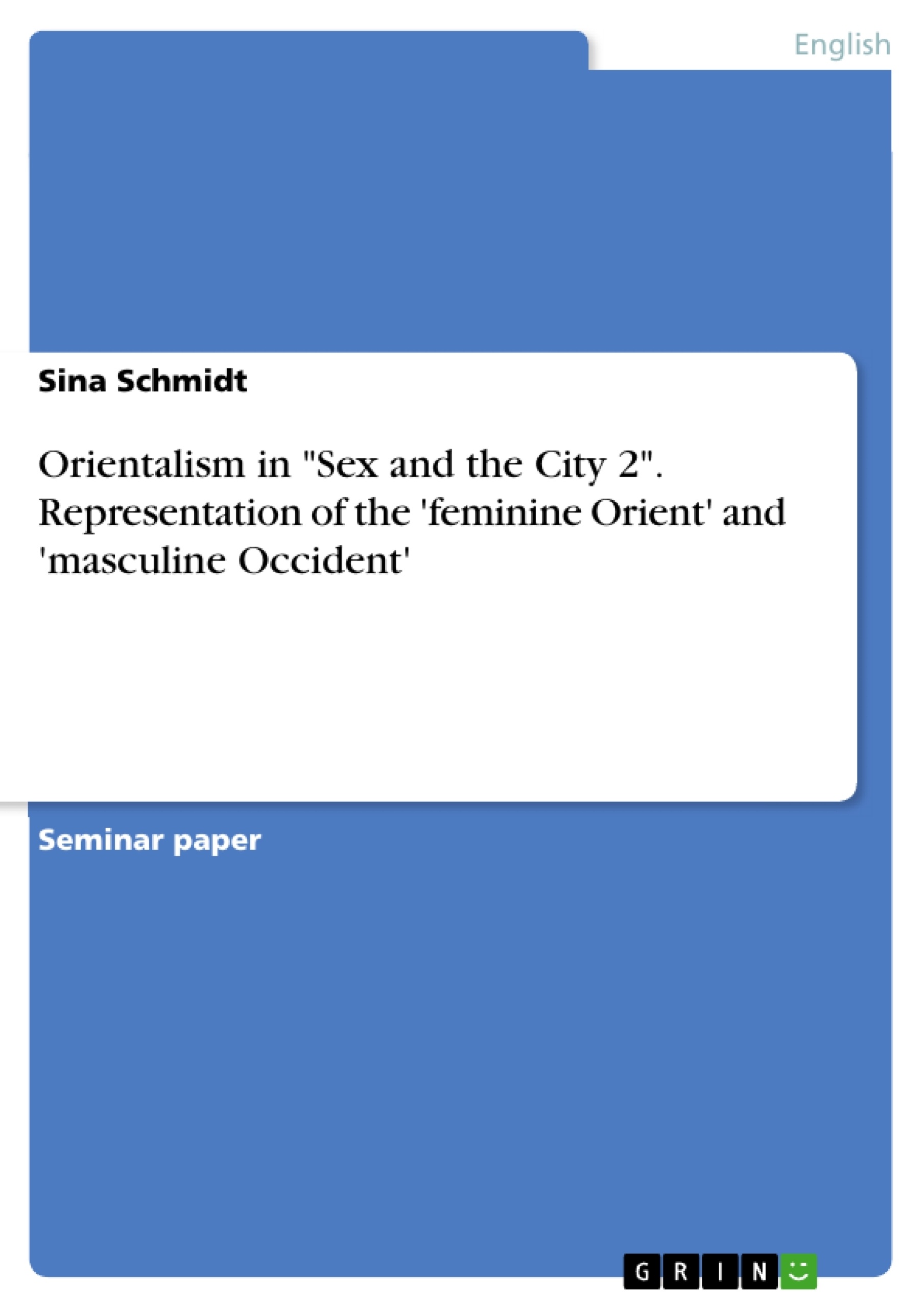This thesis aims to examine the presence of Orientalism in U.S.-American mainstream popular culture. The basis for this is the movie "Sex and the City 2" (hereafter referred to SatCII) from 2010, based on the globally successful series "Sex and the City". The series Sex and the City is one of the most successful series and few TV series have had such
an impact on our contemporary culture. Its success story and its ongoing relevance – as there was even a third movie in discussion – makes the series and the movies highly interesting for academic purposes, since a critical examination of the represented themes provides genuine insights into today's society.
In what way does SatCII project Orientalism? What is the significance behind the used Orientalist representations? What do these images reveal about the relationship between the United States and Eastern countries and, especially how does America see itself? Edward Said claims the representation of the Middle East has less to do with the Orient than it does with 'our' world.
In order to answer the aforementioned questions, Chapter 2.1 deals with the representation of Orientalism and general Orientalist stereotyping in mainstream popular culture. Moreover, it gives insight into their origin and tries to shed light on the development of Orientalism over time. After that, in Chapter 2.2 the paper turns its attention to "Sex and the City" in order to examine whether the series is in hold of a feminist status, as this discourse is of importance for the ensuing analysis.
The analysis in Chapter 2.3, then, looks at the ways in which SatCII depicts the ideology of the ‘feminine Orient’ and ‘masculine Occident’. This part includes select scenes from the movie in order to underline how the U.S. views the East and itself. Finally, Chapter 2.4 deals with one of the characters of the show – Samantha Jones. She is the key figure that represents third wave feminist thinking best and gives additional revealing insight to the notion of Western hegemony over the Orient. This part, too contains selected scenes. The conclusion then summarizes the results and provides suggestions for further, related analysis that might be of importance in this context, but that could not be dealt with in the scope of this work.
Inhaltsverzeichnis (Table of Contents)
- Introduction
- Orientalism in Popular Culture
- Representation of Orientalism in Mainstream Popular Culture
- The Quasi-Feminist Status of Sex and the City
- Sex and the City 2's Representation of the 'Feminine Orient' and 'Masculine Occident'
- Samantha as Performing Masculinity
- Conclusion
Zielsetzung und Themenschwerpunkte (Objectives and Key Themes)
This thesis examines the presence of Orientalism in U.S.-American mainstream popular culture, specifically focusing on the 2010 film Sex and the City 2 (SatCII). It aims to understand how the film projects Orientalism, the significance of its representations, and what these images reveal about the relationship between the United States and Eastern countries. The study also explores how America sees itself through these representations.
- Orientalist representations in mainstream popular culture
- The portrayal of the "feminine Orient" and "masculine Occident" in SatCII
- The role of Samantha Jones in representing third-wave feminist thinking
- The influence of popular culture on the perpetuation of Orientalist stereotypes
- The relationship between Orientalism, colonialism, and capitalism
Zusammenfassung der Kapitel (Chapter Summaries)
- Introduction: This chapter introduces the thesis's focus on examining Orientalism in popular culture, using Sex and the City 2 as a case study. It emphasizes the importance of analyzing popular culture to understand cultural relations, especially in the context of intertwining Arab and U.S.-American cultures.
- Chapter 2.1 - Representation of Orientalism in Mainstream Popular Culture: This chapter provides an overview of Orientalist representations in mainstream popular culture, exploring their historical origins, evolution over time, and the role of binary thinking in perpetuating stereotypes. It also highlights the impact of Orientalist images in contemporary American culture.
- Chapter 2.2 - The Quasi-Feminist Status of Sex and the City: This chapter delves into the controversial debate surrounding the feminist status of Sex and the City. It examines the show's portrayal of female characters who challenge traditional gender roles and its engagement with third-wave feminist themes.
- Chapter 2.3 - Sex and the City 2's Representation of the 'Feminine Orient' and 'Masculine Occident': This chapter analyzes how Sex and the City 2 depicts the ideology of the "feminine Orient" and "masculine Occident" through specific scenes. It aims to understand the film's perspective on the relationship between the United States and the East.
- Chapter 2.4 - Samantha as Performing Masculinity: This chapter focuses on the character of Samantha Jones, examining her role in representing third-wave feminist thinking and offering insights into Western hegemony over the Orient.
Schlüsselwörter (Keywords)
The thesis explores the concepts of Orientalism, popular culture, Sex and the City 2, feminist theory, third-wave feminism, Western hegemony, and the "feminine Orient" and "masculine Occident." It investigates the influence of historical colonialism and contemporary capitalism on the perpetuation of Orientalist stereotypes and the role of popular culture in shaping cultural perceptions.
- Quote paper
- Sina Schmidt (Author), 2021, Orientalism in "Sex and the City 2". Representation of the 'feminine Orient' and 'masculine Occident', Munich, GRIN Verlag, https://www.grin.com/document/1280402




